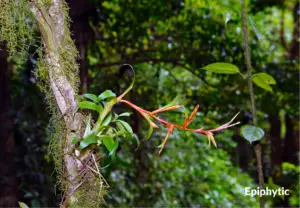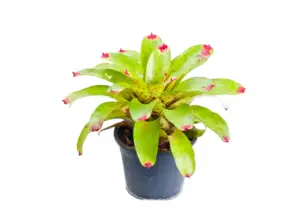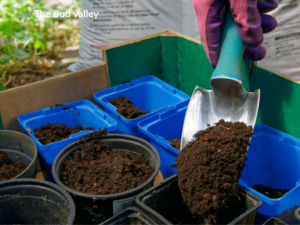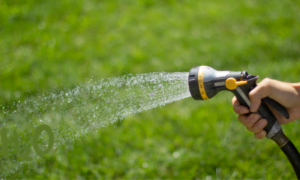
In city life, even with limited space, bringing a touch of green indoors is achievable. Starting a green campaign within your four walls allows you to decorate from your living room to your bedroom. Indoor plants are indispensable for enhancing the beauty of a home while keeping the mind and body refreshed. One such plant is the Bromeliad, which I have been caring for since 2012. There are numerous indoor plants available in our country, but many people struggle with knowing how to care for them, leading to their demise. Today, I’ll share insights on caring for Bromeliads. Bromeliads offer long-lasting tropical colors and belong to a family of flowering plants with 80 genera and 3700 species known mainly from tropical America. They thrive in various American and subtropical regions. In this discussion, I will focus on two plants from this family: the well-known pineapple plant and the Spider plant. Bromeliads can serve as attractive ornamental plants in gardens as well.
What type of plant:


There are two types of bromeliads: Terrestrial and Epiphytic. Terrestrial bromeliads grow in soil like most other plants. Epiphytic bromeliads, on the other hand, grow on other plants but do not harm them. They obtain nutrients and moisture from the air, absorbing water through their leaves. Epiphytic bromeliads are not parasitic; they simply use other plants as support structures without causing harm.
Soil Quality:

The soil for bromeliads needs to be loose and well-prepared before planting. It should be soft and maintained to avoid drying out quickly. A recommended potting mix consists of 30% garden soil, 30% coco peat, 20% sand, and 20% compost, mixed with perlite to improve soil aeration and drainage. It’s crucial to prepare the pot properly with a good drainage system to ensure the health and growth of the bromeliads..
Light

Indoor plants generally don’t need a lot of light. Bromeliad plants thrive in indirect light. Place the pot in a location in your home where it receives adequate morning and afternoon light. Excessive sunlight can harm the plant, but the flowers require a bit more light—about 3-4 hours in the afternoon is ideal to promote flowering.
Water

Bromeliads are drought-tolerant plants and do not require frequent watering. During warm months, water them once every 1-2 weeks, and during winter, water them once every 2-3 weeks. Check the soil texture before watering; if it feels soft, then watering is not necessary. This helps maintain optimal soil moisture without overwatering the plant.
Fertilizer

Avoid overfeeding indoor plants; balance is key. Use a balanced NPK fertilizer like 20-20-20, diluted at 5gm per liter of water, and apply every 1-2 months by spraying on the leaves. Alternatively, nitrogen-rich tea leaf fertilizers can be used occasionally. Additionally, apply a handful of vermicompost every 1-2 months to provide organic nutrients. Indoor plants generally do not require excessive chemical fertilizers to thrive.
When buying plants from the market, I start by cleaning any weeds from them. If the soil is compacted, I soak it in water. For softer soil, I carefully transfer the plant into my prepared tub to avoid damaging the roots.
Choosing the right pot is crucial for indoor bromeliad plants. Plastic tubs on the balcony enhance room aesthetics. Terracotta pots are also suitable, though they don’t retain water like clay pots. Avoid keeping them in market-bought pots for long; transfer them after a few days.
Taking care of indoor plants, including bromeliads, is straightforward. Dusting the leaves weekly helps them absorb nutrients and water efficiently through their foliage. To prevent soil compaction, gently loosen it with a hoe. Protect against insects and weeds by regularly trimming and maintaining cleanliness.
Bromeliads grow slowly, taking about a year to flower and reaching a height of 18 inches. They thrive with adequate light and careful watering to prevent water stagnation in the tub, which can harm the plant.
Bromeliad plants naturally decline after flowering, which lasts up to six months. However, they produce offsets known as “pups” while still alive. These pups should be collected as they can grow into new plants, extending the bromeliad’s life for 2-5 years.
Temperature

Bromeliads are hardy plants capable of thriving in various temperatures, with a minimum tolerance of 45 °F and a maximum of 90 °F. They prefer higher humidity for optimal growth, while flowering typically requires temperatures above 50°F.
There are numerous varieties of bromeliad plants, each with its own flowering patterns. These plants are also utilized for their nutritional value. As indoor plants, bromeliads enhance room aesthetics with their vibrant colors and captivating fragrances.

